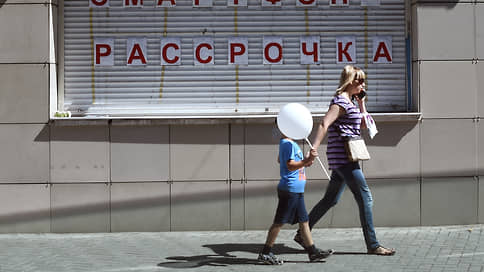In 2024, the share of credit lines in the total volume of POS loans may grow to 10%
[ad_1]

In the market for targeted commodity loans (POS loans), loans issued in the form of credit lines are becoming popular. This product allows you to repay a trade credit and purchase goods again from a certain seller in a “basket”. Compared to credit cards, the line is more limited, but it is a more understandable and less costly product, allowing you to borrow funds for large purchases, but it is limited to a service provider.
In 2024, the share of credit lines in the total volume of POS loans may grow to 10% (now it does not exceed 1%), and up to 50% within three to five years. These conclusions were reached in Post-Bank after analyzing the market for targeted commodity lending. “The defining trend in the development of POS lending in the next two or three years will be the widespread use of credit lines and their gradual replacement of the classic one-time commodity credit,” the bank believes. “A credit line can be opened online for a whole basket of goods.”
The technology of a credit line with a revolving limit in the POS segment allows the buyer to choose from a trading partner a bank with an increased credit amount compared to the purchase. The line is approved by the bank for a specified period, during which the buyer can make purchases in the same network. Each payment made restores the approved limit and available funds can be used again for new purchases.
Among retailers in partnership with external banks (or on the basis of their own credit institutions), such tools are already being developed and implemented, for example, by AliExpress, Ozon, M.Video, and others, the authors of the study note.
255.5 billion rubles
amounted to the total portfolio of targeted commodity loans (POS) of banks, according to Frank RG as of August 1, 2023
POS lending competes with already traditional credit cards and installment payment services (BNPL). Compared to POS loans, they have an advantage – the choice of service provider and other conditions, market participants note. However, this is becoming less important against the background of the global development of marketplaces in the Russian Federation, which offer from everyday goods (food) to large purchases (techniques, gadgets, etc.), bankers note.
“Compared to credit cards, purchases within the POS credit line are more profitable for the consumer,” says Andrey Pavlov, vice president of Postbank. The client receives a clear fixed monthly payment and repayment period.”
According to Frank RG, as of August 1, the total portfolio of POS loans amounted to 255.5 billion rubles. According to expert group Veta, by the end of the year the market may show growth of 10-15%.
Strengthening positions in the installment market (see “Kommersant” dated August 16) differ from credit lines in that they are focused primarily on impulsive short purchases for short periods and small amounts (up to 15 thousand rubles on average). According to OTP-bank estimates, the average check in the POS segment is 55 thousand rubles, BNPL “if it cannibalizes POS sales, then in a relatively small share,” they are sure: “In the future, there will be changes in the legal regulation of installments in terms of limiting business” .
The prospects for both credit lines and POS lending in general are now influenced by multidirectional factors. Ilya Zharskiy, managing partner of Veta, considers the increase in the key rate, the economic situation and the policy of credit institutions regarding the risks of borrowers as restraining forces. At the same time, inflation and the lack of actual income growth will form consumer demand, the expert specifies.
The seasonal effect and the weakened ruble will be able to neutralize this risk of slowdown, according to OTP-Bank. Moreover, credit products in the POS segment pay off for the bank when working with large retail chains, emphasizes Elman Mehdiyev, president of SRO NAPCA, and costs are reduced, since banks prefer to lend to a client not on the trading floor, but online.
[ad_2]
Source link





